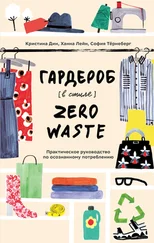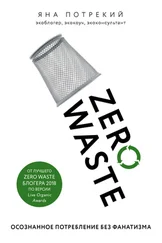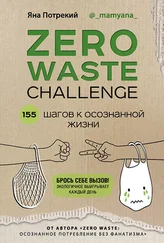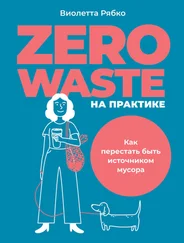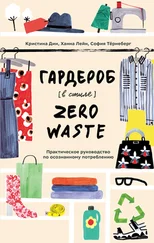1 ...6 7 8 10 11 12 ...16
Considering Conservation along the Food Supply Chain
If you picked this book up, you likely care about the environment. While this book’s focus is on reducing your personal food waste at home, it’s useful to step back to look at the big picture. What do we know about food and the environment? How are farmers and industry helping to conserve? Individuals and groups are working in multiple ways to produce adequate food, control the use of natural resources, and reduce waste across the food supply chain. This section covers a few of those ways.
Ecological management of pests
Imagine spending hundreds of hours preparing the land and planting crops across hundreds of acres. Then imagine losing all of that crop to bugs. To the farmer, this means a huge loss of time, income, and resources. To the consumer, it can mean higher prices at the grocery store or shortages of certain foods or ingredients.
Agroecology is the study of the relation of agricultural crops and the environment. Farmers are applying ecological principles to pest management. This is a win-win situation because it ensures high productivity while causing no harm to the environment. The word pesticide may conjure up devilish images of chemicals and evil, but in reality, responsible pesticide use actually helps the environment.
The media shares a lot of information about pesticides, their use, and their toxicity levels. Those used by both conventional and organic farmers are safe when applied appropriately. The miniscule “residues” that are sometimes left behind have no proven adverse effects on human health. Also, herbicides are a specific type of pesticide designed to kill specific weeds. Pesticide is the broader term of a chemical designed to kill weeds, insects, fungus, larvae, or bacteria. Farmers are motivated to use minimal amounts of pesticides because they’re both expensive and time-consuming to apply.
PESTICIDES: THE DOSE MAKES THE POISON
The Environmental Working Group (EWG) is a popular nonprofit activist organization with a $12 million budget, heavily supported by the organic industry. A majority of toxicologists believe that the EWG overstates the health risks of chemicals.
Each year, the EWG publishes a “Dirty Dozen” list, warning consumers about consuming certain fruits and vegetables because of pesticide residue. However, their testing is done only on conventionally grown produce and doesn’t test USDA Certified Organic produce (which allows an approved list of natural pesticides, but not synthetic ones). They also don’t communicate the context of the residues, measured in parts per million (a part per million can be visualized as a single grain of sugar among 273 sugar cubes). Every chemical has a predetermined safe level of application. The pesticide residues found by the EWG are nowhere near a hazardous tolerance level according to the U.S. standards (No Observable Adverse Effect Level, or NOAEL, is the scale in which the highest tolerable level of a pesticide where no adverse effect is identified).
Pasture management, cover crops, soil conservation, and quality
Farmers use a lot of strategies to reach production and conservation goals. Every farmer manages their land differently depending on its geography. Careful consideration about the application of nutrients determines the health of the soil and overall production. Many farms have a “no till” or minimal tillage philosophy. Soil type and climate determine the type of tillage strategy. The less tillage, the less water erosion, and more carbon storage (which helps offset greenhouse gas emissions). Cover crops, planted after row crops are harvested, help with soil conservation as well as natural pest management. Crop rotation (rotating what you plant in various fields from one crop to another on an annual basis) allows for different plants to release different nutrients into the soil.
More food with fewer resources
When it comes to agriculture, sustainability is about growing enough food to meet humanity’s need while enhancing the quality of the land, water, and air. Of course, this also has to be economically viable and promote the well-being of farmers and society.
Like so many aspects of our life, farming looks different than it did 30 years ago. Due to urban sprawl today’s farmers are challenged to grow more food on less land. To do so, they use a lot of different technology to better manage their fields and crops. They call it “smart farming” (see the section “ Technology and agriculture don’t mix”).
You likely have heard the term upcycling as a way to take a discarded byproduct from one industry and reuse it to make another product that’s better than the original. But did you know that food can be upcycled, too? If you’ve ever enjoyed a spent grain pizza at a local microbrewery, you experienced an upcycled meal. Upcycling is taking food, or a food byproduct, and turning it into something edible. Beer manufacturers recycle their grain, creating flour, pasta, and bread products with safe, leftover raw material.
The first person who decided to make sausages, fruit jam, or banana bread may not have thought they were “upcycling,” but it was a great food waste strategy. Industry is now using byproducts that are safe to eat (that were previously wasted) to create other products. For instance, the fruit pulp left after pressing fruit for juice can be used to add nutrition to snack bars. In fact, there’s currently a whole industry focused on creating packaged foods from upcycled ingredients.
Because food is made from carbon, oxygen, and nitrogen, out-of-the-box-thinkers are discovering ways to literally create nutrition out of thin air. In the 1960s, NASA came up with the idea to feed astronauts using a type of bacteria known as hydrogenotrophs to transform the carbon dioxide (CO 2) the astronauts exhaled into protein. Today, more scientists are evaluating this “carbon capture” process, including a company called Air Protein that seeks to solve a decades-long challenge about creating protein from CO 2.
Cattle farmers upcycle, too, by using grocery store food waste to create ingredients for animal feed. No, they don’t hand-feed a cow a candy bar or slice of old bread, but they take foods like them that are past their use-by dates (as well as waste like vegetable trimmings, food pulp, and nut hulls) and grind them up and add them to other feed material. That feed is then carefully analyzed for specific macro and micronutrients, to provide the specialized nutrition profile that meets the animal’s needs. Animal science experts call this a circular bio-economy (our backyard chickens did the same — pecked at our moldy bread or rotting vegetables then created new nutrition via eggs!).
Concerning the Environmental Impact of Food Waste
While food spoilage is one of the biggest reasons people throw away food, many Americans throw away perfectly good, safe, and consumable food. In addition, the water and energy used to produce the food is also wasted. Food that sits in landfills results in the production of nitrogen pollution, and it emits methane, a greenhouse gas. According to the U.S. Environmental Protection Agency (EPA), food waste accounts for about 6 percent of human-caused greenhouse gas (GHG) emissions. Therefore, preventing food waste can be one potential solution to slow global warming.
 There’s a lot of conflicting data regarding the role agriculture plays specifically in GHG emissions. While agriculture plays a role, according to the EPA it accounts for a small portion of all emissions compared to the transportation industry (see Figure 2-1). Planes, rockets, trains, buses, and automobiles generate the largest amount of GHG emissions, along with the energy and industry sectors, accounting for about 80 percent of all emissions (see Figure 2-2). Also, carbon dioxide accounts for 80 percent of GHG emissions, with methane accounting for 10 percent.
There’s a lot of conflicting data regarding the role agriculture plays specifically in GHG emissions. While agriculture plays a role, according to the EPA it accounts for a small portion of all emissions compared to the transportation industry (see Figure 2-1). Planes, rockets, trains, buses, and automobiles generate the largest amount of GHG emissions, along with the energy and industry sectors, accounting for about 80 percent of all emissions (see Figure 2-2). Also, carbon dioxide accounts for 80 percent of GHG emissions, with methane accounting for 10 percent.
Читать дальше

 There’s a lot of conflicting data regarding the role agriculture plays specifically in GHG emissions. While agriculture plays a role, according to the EPA it accounts for a small portion of all emissions compared to the transportation industry (see Figure 2-1). Planes, rockets, trains, buses, and automobiles generate the largest amount of GHG emissions, along with the energy and industry sectors, accounting for about 80 percent of all emissions (see Figure 2-2). Also, carbon dioxide accounts for 80 percent of GHG emissions, with methane accounting for 10 percent.
There’s a lot of conflicting data regarding the role agriculture plays specifically in GHG emissions. While agriculture plays a role, according to the EPA it accounts for a small portion of all emissions compared to the transportation industry (see Figure 2-1). Planes, rockets, trains, buses, and automobiles generate the largest amount of GHG emissions, along with the energy and industry sectors, accounting for about 80 percent of all emissions (see Figure 2-2). Also, carbon dioxide accounts for 80 percent of GHG emissions, with methane accounting for 10 percent.